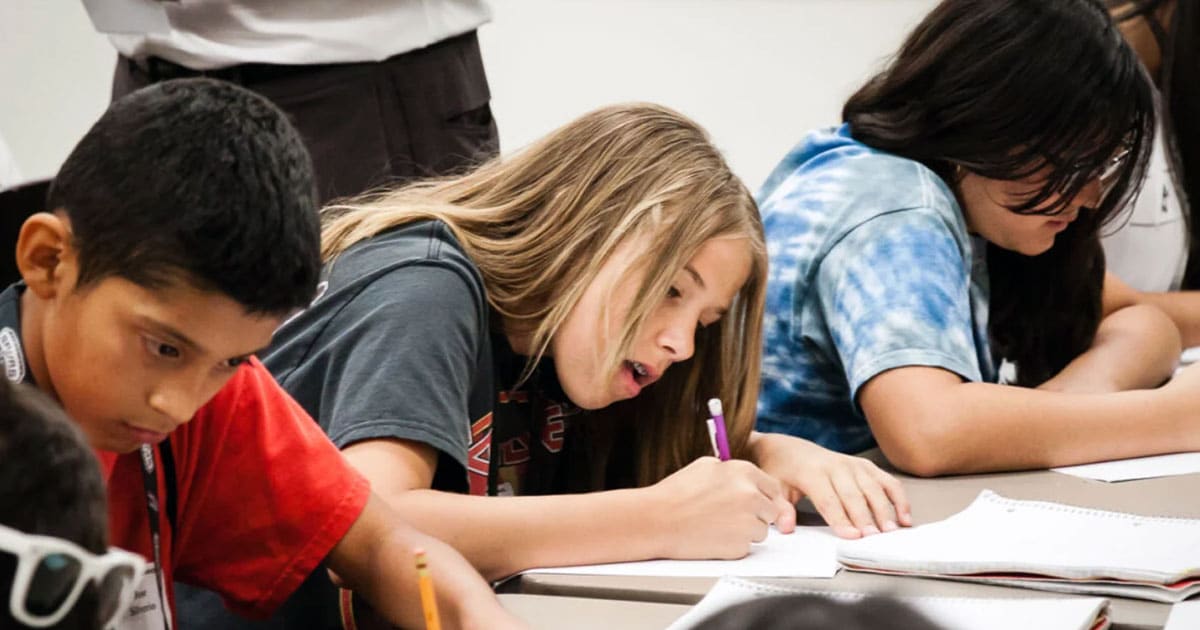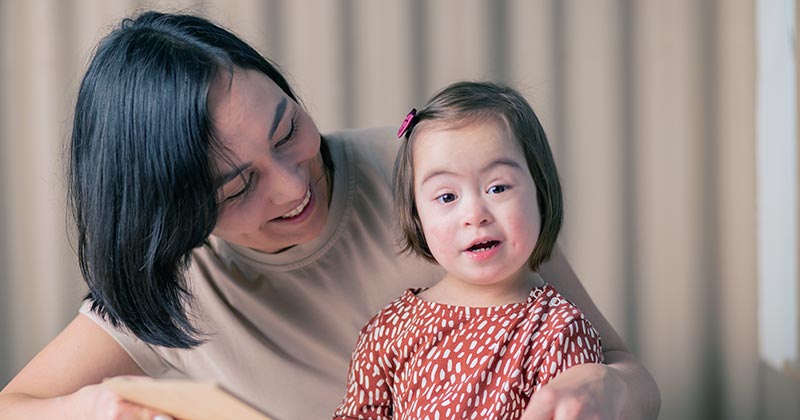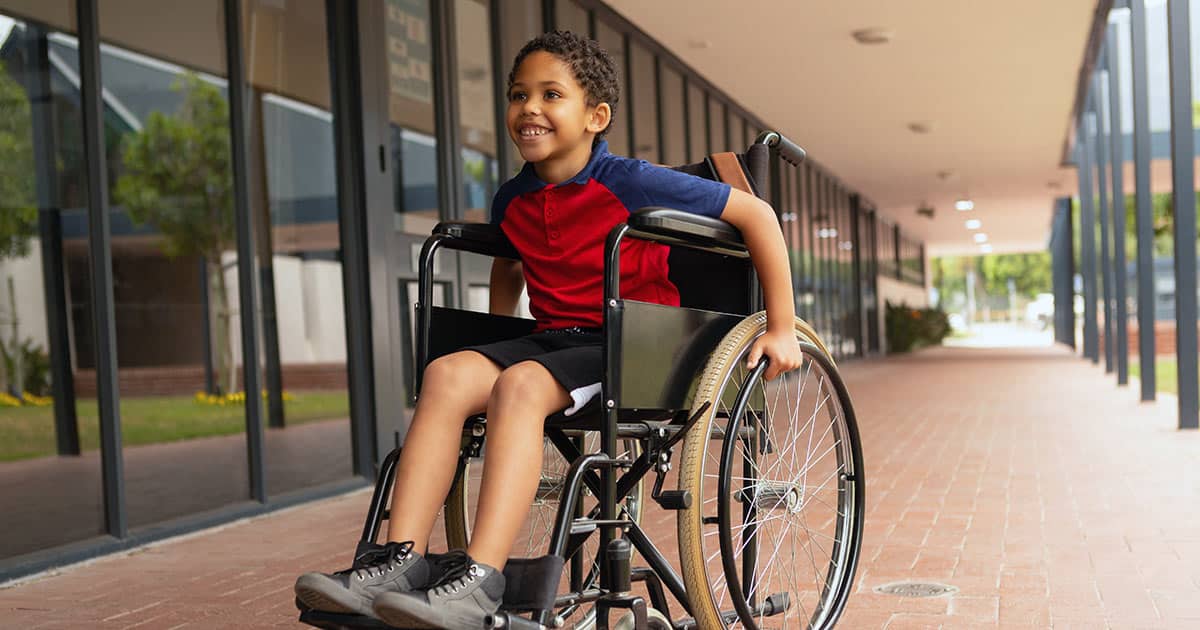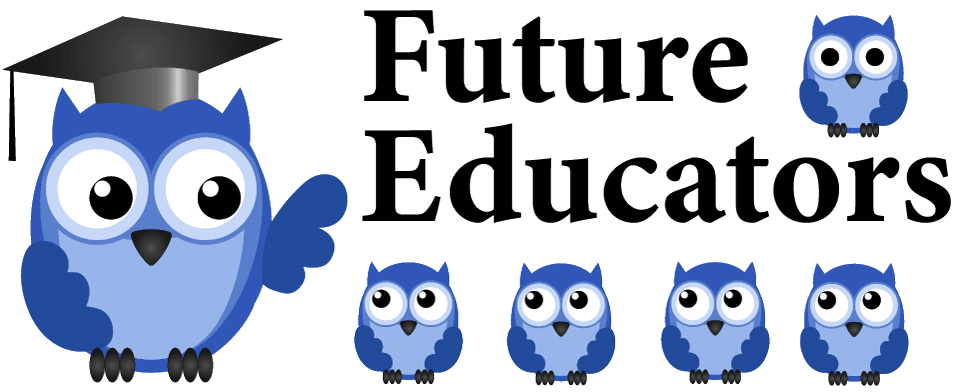IEP stands for Individualized Education Program. Alternative definitions also exist, which I’ll get to in a moment.
In essence, an IEP is a document developed for students with disabilities. It’s meant for those who are eligible for special education services under the Individuals with Disabilities Education Act (IDEA). The document identifies special ed and related services to help the student progress in school.
Let’s explore more about what an IEP is. We’ll look at the purpose, who qualifies, and the benefits for a child with a disability.
What Is an IEP at a Glance?

An IEP, or Individualized Education Program, is a document that outlines the specific education plan for a student with a disability. The student must also be eligible for special education services under the Individuals with Disabilities Education Act (IDEA).
The IEP includes information about the student’s strengths, needs, and goals. Importantly, the document identifies the special education and related services to be provided to help the student make progress in school.
Depending on the needs of the particular student, the kinds of services available are: adaptive physical education, assistive technology, behavioral support, counseling, occupational therapy, specialized instruction, speech and language therapy, and transportation.
The IEP is created by a team that includes the student’s parents, teachers, and other professionals who work with the student. The IEP is reviewed and updated on an annual basis at an IEP meeting, or more frequently if needed.
If your child attends a private school, note that private schools are not legally obligated to provide special education support services, unlike public schools. However, you can still reach out to your school district to initiate the IEP process. Some school districts may have limited funds designated to support services to private school students, but this availability is not guaranteed.
Other Things “IEP” Stands For
Variations of the term Individualized Education Program (IEP) are used depending on the context or jurisdiction.
Individualized Education Plan (IEP), Individual Education Plan (IEP) and Individual Education Program (IEP) are alternative terms that are used to refer to the same document we’ve been discussing. In some cases, the acronym “IEP” is also used by itself to refer to the document and the process.
504 plan is another term that may be used to refer to accommodations for students with disabilities under the Rehabilitation Act of 1973. This is a federal law that predates the IDEA and applies to schools that receive federal funding.
Personalized Learning Plan (PLP) is another term used in some cases to refer to individualized education programs for students with disabilities. In some countries, Individualized Program Plan (IPP) is used instead.
Regardless of the term used, the purpose and intent of the plan should be the same. The goal is to provide a child with a disability an individualized education to address their unique needs.
Purpose and Benefits of an IEP

The purpose of an IEP is simply to help a student with disability do better at school by providing them with extra support. We want students with special education needs to do better on multiple fronts, such as improving their:
- ability to access the curriculum and participate in school activities
- ability to communicate and interact with their peers and adults
- ability to function in other areas of their life like physical and occupational therapy goals
- behavior and ability to follow classroom rules and expectations
- grades in specific subjects or overall
- progress towards graduation, or other academic or career goals
- reading and writing skills.
The IEP includes an assessment of the student’s position and has specific actionable goals. It’s reviewed and updated on an annual basis, or more frequently if needed, to ensure the child’s needs are being met and that they’re making progress towards their goals.
Key Elements

In an IEP document, you will typically find each one of these key elements.
- Student’s current strengths, needs and level of performance. A detailed assessment of the child’s current abilities, including their academic, social, and behavioral strengths and needs.
- Measurable annual goals. Specific, measurable and time-bound annual goals that are aligned with the student’s needs and that will help them make progress in school.
- Special education and related services. The special education and related services to be provided to the student, including the type and frequency of services, the location where services will be provided, and the expected outcomes of the services.
- Accommodations and modifications. Any accommodations or modifications that the child may need in order to access the curriculum and participate in school activities.
- Transition plan. If the student is 14 years or older, the IEP should include a transition plan that outlines the steps the child and the school will take to prepare the student for life after high school, including post-secondary education, employment, and independent living.
- Parental involvement. A statement of how the parents will be involved in the child’s education, as well as their rights under the IDEA.
- Regular review and updates. A schedule for regular review and updates, typically at least once a year, or more frequently as needed.
The elements of an IEP may vary depending on the jurisdiction or the specific needs of the student. But these are the key elements that are commonly included in IEPs.
Who Qualifies for an IEP?

A student qualifies for an IEP if they have a disability and need special education and related services for school. Eligibility is determined by a team that includes the student’s parents, teachers, and other professionals who work with them.
The team will evaluate the student to determine if they have a disability that affects their ability to learn, and if they need relevant support services.
The Individuals with Disabilities Education Act (IDEA) is the federal law that defines the categories of disabilities that qualify for special education and related services. These categories include:
- Autism
- Deaf-blindness
- Deafness
- Developmental delay
- Emotional disturbance
- Hearing impairment
- Intellectual disability
- Multiple disabilities
- Orthopedic impairment
- Other health impairment
- Specific learning disability
- Speech or language impairment
- Traumatic brain injury
- Visual impairment, including blindness
Eligibility criteria and the process for determining if a student qualifies varies depending on the state or jurisdiction. However, the goal is to identify students who have a disability that affects their ability to learn, and who need special education and related services to make progress in school.
IEP vs 504
Both an Individualized Education Program (IEP) and a 504 plan are designed to provide accommodations and support for students with disabilities. But they’re different types of plans that serve different purposes and are governed by different laws.
An IEP is a legally binding document developed for a student with a disability who is eligible for special education services under the Individuals with Disabilities Education Act (IDEA).
A 504 plan is for a student needing help but who doesn’t technically qualify for special ed services. The plan is developed for a child with a disability who does not meet the criteria for special education help under IDEA but still needs accommodations to participate in school.
The plan is created under Section 504 of the Rehabilitation Act of 1973; a federal law that prohibits discrimination against individuals with disabilities by any program or activity that receives federal funding. It is funded by the federal government, while IEPs are funded by the school district.
A 504 plan may require a less in-depth evaluation and assessment of the student’s abilities and needs compared to an IEP.
A 504 plan provides accommodations to help the student access the curriculum and participate in school activities, which are generally less intensive compared to the special education and related services provided under an IEP.
The plan is reviewed and updated periodically, but not as frequently as an IEP which is reviewed and updated annually or more frequently if needed. And it is not a legally binding document. The school is assigned federal funding but is not required to provide the accommodations outlined in the plan, unlike an IEP which is legally binding.
Services Available

Special education and related services that may be provided to a student as part of their IEP include:
- Adaptive physical education. PE instruction adapted to meet the student’s physical needs or abilities.
- Assistive technology. Devices or software that can help the student with communication, organization, or other tasks.
- Behavioral support. Strategies or interventions to help the student manage their behavior and improve their social skills.
- Counseling. Talk sessions to help the child with emotional or social issues.
- Occupational therapy. Physical therapy to help the student improve their fine motor skills, self-care skills, or sensory processing.
- Specialized instruction. One-on-one or small group instruction, or instruction that is adapted to meet the student’s specific needs.
- Speech and language therapy. Therapy to help the student improve their communication skills or address speech or language disorders.
- Transportation. Transport to and from school or to and from related services.
The IDEA does not specify a funding limit on support services in an IEP. However, it does require the services be sufficient to provide a meaningful educational benefit, and that they’re provided at no cost to parents. Funding for special education and related services is typically limited by the budget allocated to the school district.
The IEP includes appropriate strategies, including positive behavioral interventions, strategies, and supports, to address behaviors that interfere with the child’s learning or that of others.
Tim Weiss
It’s important to note that the specific services provided to a student will depend on their individual needs and goals as outlined in their IEP.
Curriculum Adjustments

To help a student with a disability access the curriculum and participate in school activities, accommodations and modifications to the curriculum may be made. These could include things like:
- Adapt testing. Give the test in an alternative format, such as an audio or Braille version, or allow extra time to complete the test.
- Adapt the curriculum. Simplify the language or concepts used in the curriculum, or provide alternative materials that are more accessible to the student.
- Additional support. Provide a tutor, a note-taker, or other support services to help the student succeed.
- Modify teaching methods. Use hands-on materials, visual aids, or other strategies to help the student understand the material.
- Provide extra time. Give the student extra time to complete assignments, tests, or other activities.
The specific accommodations and modifications will depend on the student’s needs and goals as outlined in their IEP. The list is not exhaustive and could be very different depending on the child’s individual requirements.
For Parents: The IEP Process

The process for starting an IEP varies depending on the state or jurisdiction. But, generally, the process involves the following steps, beginning with a referral for an evaluation.
- Referral. A referral for an evaluation for special education services can come from a parent, teacher, or other school staff member. The referral should include information about the student’s strengths and needs, as well as any concerns about the student’s performance in school.
- Evaluation. Once a referral is received, the school district will conduct an evaluation to determine if the student has a disability and if they need special ed services to make progress in school. The evaluation will include assessments in areas such as academics, behavior, and any other areas that are related to the student’s suspected disability.
- Eligibility determination. After the evaluation is completed, the school district will determine if the student is eligible for special education services. If the student is found eligible, the school district will develop an IEP.
- IEP team meeting. The school district will schedule an IEP meeting to develop the program. The team will include the student’s parents, teachers, and other professionals who work with the student. They’ll review the results of the evaluation and determine the student’s strengths, needs, goals, and the special education and related services that will be provided to the student to help them make progress in school.
- Implementation. After the program is developed, the school district will implement it and provide the student with the special education and related services. The school district will also provide the student’s parents with a copy of the document.
- Review and update. The IEP will be reviewed and updated on an annual basis, or more frequently if needed, to ensure that the student’s needs are being met and that they are making progress towards their goals. The IEP team, which includes the student’s parents, teachers, and other professionals, will review the student’s progress and make any necessary changes.
Hope you find this information useful. The whole point of an IEP is to make school life, and therefore life in general, better for a child with a disability. Take advantage of the process to support children in need.

I really enjoyed reading this information. It has really helped me to understand the whole concept of IEP.
The goals outlined in an IEP are determined by the student’s present levels of educational performance and the specific needs resulting from their disability. These aims are meant to help the child participate and make progress in the general curriculum, spanning academics, social skills, behavior, self-help, and any other educational needs.